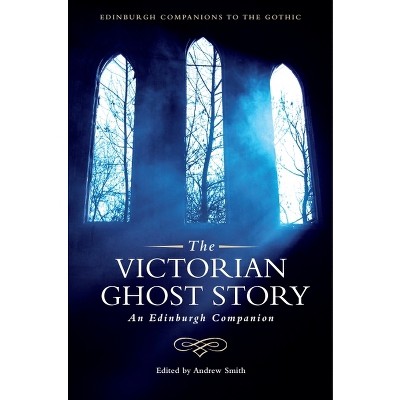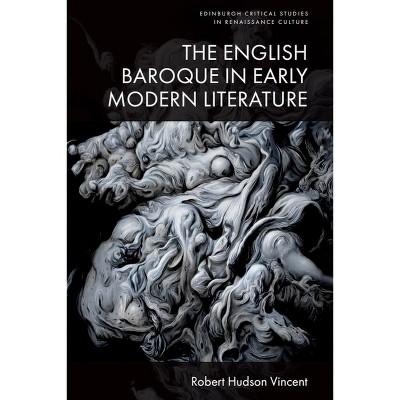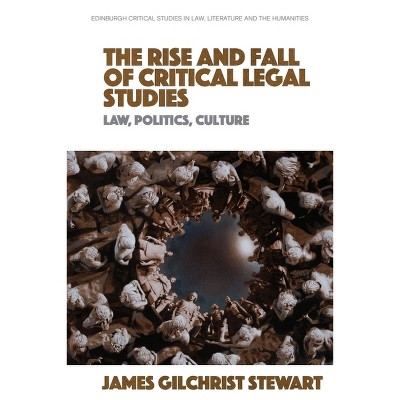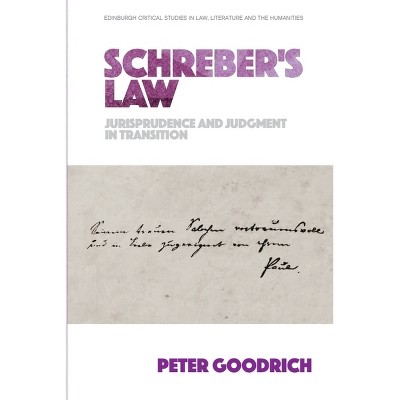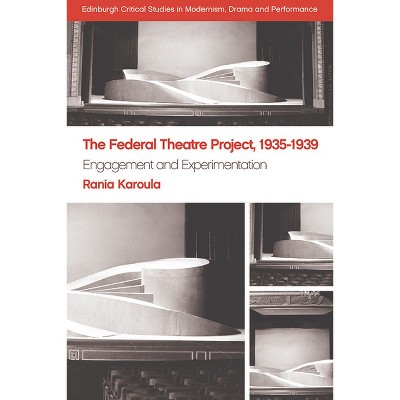Sponsored

The Sculptural Body in Victorian Literature - (Edinburgh Critical Studies in Victorian Culture) by Patricia Pulham (Paperback)
In Stock
Sponsored
About this item
Highlights
- Explores Victorian writers' erotic investment in statuesTheorises the function of the sculptural body in Victorian poetry and proseOffers thorough readings of sculpture in Victorian texts and contextsExamines a wide range of works by well-known and lesser-known writers of the period (e.g. Thomas Hardy, John Ruskin, Oscar Wilde, Walter Pater, Vernon Lee, Olive Custance, Arthur O'Shaughnessy)Extends the British focus to encompass nineteenth-century European and American writings This book argues that, in Victorian literature, transgressive desires that cannot be openly acknowledged are often buried and encrypted in the marble bodies of statues.
- About the Author: Patricia Pulham is Professor of Victorian Literature at the University of Surrey and editor of the EUP journal, Victoriographies.
- 240 Pages
- Literary Criticism, Feminist
- Series Name: Edinburgh Critical Studies in Victorian Culture
Description
About the Book
This book argues that, in Victorian literature, transgressive desires that cannot be openly acknowledged are often buried and encrypted in the marble bodies of statues.
Book Synopsis
Explores Victorian writers' erotic investment in statues
Theorises the function of the sculptural body in Victorian poetry and proseOffers thorough readings of sculpture in Victorian texts and contextsExamines a wide range of works by well-known and lesser-known writers of the period (e.g. Thomas Hardy, John Ruskin, Oscar Wilde, Walter Pater, Vernon Lee, Olive Custance, Arthur O'Shaughnessy)Extends the British focus to encompass nineteenth-century European and American writings
This book argues that, in Victorian literature, transgressive desires that cannot be openly acknowledged are often buried and encrypted in the marble bodies of statues. Examining sculpture's ubiquity in Victorian galleries and museums, Pulham observes that while touch is prohibited in these cultural locations Victorian texts offer 'safe' spaces where sculptures may be kissed or caressed using metaphors of tactility that work at the intersections of touch and vision and permit the recovery of forbidden love.
From the Back Cover
Explores Victorian writers' erotic investment in sculpture This book argues that, in Victorian literature, desires which cannot be openly acknowledged are often buried and encrypted in the marble bodies of statues. Examining sculpture's ubiquity in Victorian galleries and museums Pulham observes that, while touch is prohibited in these cultural locations, Victorian texts offer 'safe' spaces where statues may be kissed or caressed using metaphors of tactility that work at the intersections of touch and vision to permit the recovery of forbidden love. Patricia Pulham is Professor of Victorian Literature at the University of Surrey and Editor of the Edinburgh University Press journal, Victoriographies.Review Quotes
The Sculptural Body in Victorian Literature is a pertinently thought-provoking text. Its contents are thoroughly researched and productively interdisciplinary, and I do not doubt that the book will prove highly useful to those researching in gender and sexuality studies, museum studies, and nineteenth-century literature and art history for many years to come. Moving forward, I hope that relevant scholars will begin to work on answering Pulham's concluding call for more research to be undertaken into instances where literature, sculpture, race, and/or national identity intersect.--Caitlin Doley, University of York "British Association for Victorian Studies"
By focusing its discussion of Victorian desire through the understudied central motif of touching statues, Pulham offers a turn of the critical kaleidoscope that brings into focus new aspects of well-known works and foregrounds lesser-known writers and texts. She opens the way for new assessments of well-established critical models, from the male gaze to Eve Sedgwick's theories of triangulated homoerotic relationships, and brings together art history, literary studies, and classical reception studies in a fresh convergence.--Laura Eastlake, Edge Hill University "Victorian Studies"
Patricia Pulham's strikingly original interdisciplinary study expertly guides us through Victorian literature's imaginary museum of sculpture. With characteristic vivacity and flair, she explores the role of statues in the Victorians' negotiation of their own sexualities, revealing how sculptures in nineteenth-century poetry and fiction function as intensified sites of transgressive desire.--Hilary Fraser, Birkbeck, University of London
This gracefully written, well-edited interdisciplinary study offers a historical account of statuary and its reception in Victorian Britain. [...] Pulham articulates an original, cogent, and elegant interpretation of the arts of suppression and indulgence [...] Highly recommended.--T. Hoagwood, emeritus, Texas A&M University "CHOICE"
About the Author
Patricia Pulham is Professor of Victorian Literature at the University of Surrey and editor of the EUP journal, Victoriographies. Her research focuses on Victorian literature, culture and the visual arts, and she has published widely on a range of nineteenth-century authors. She joined the University of Surrey in 2017 where she is Director of Research in the School of Literature and Languages and teaches modules on the Victorian fin-de-siècle and neo-Victorian literature.
